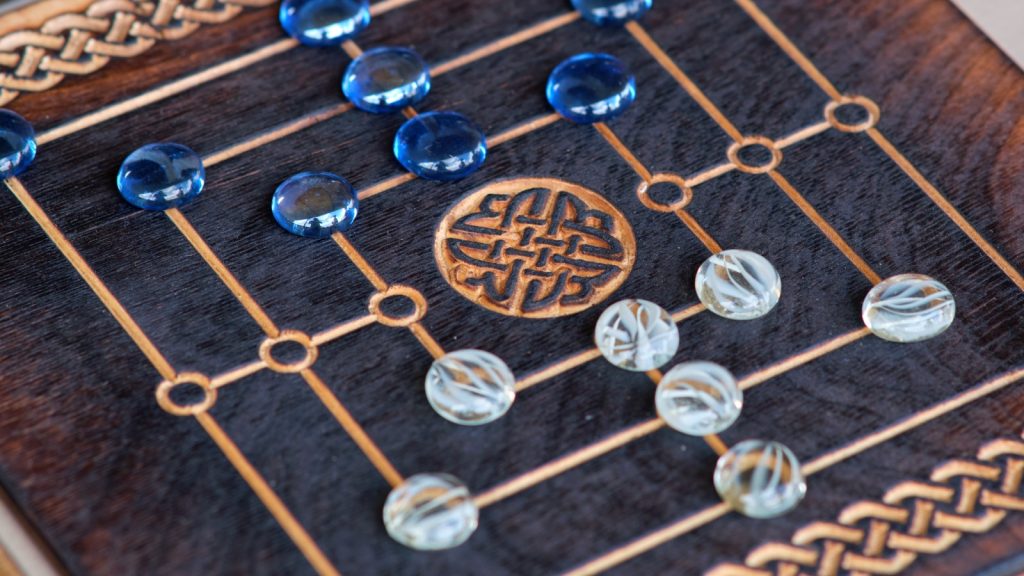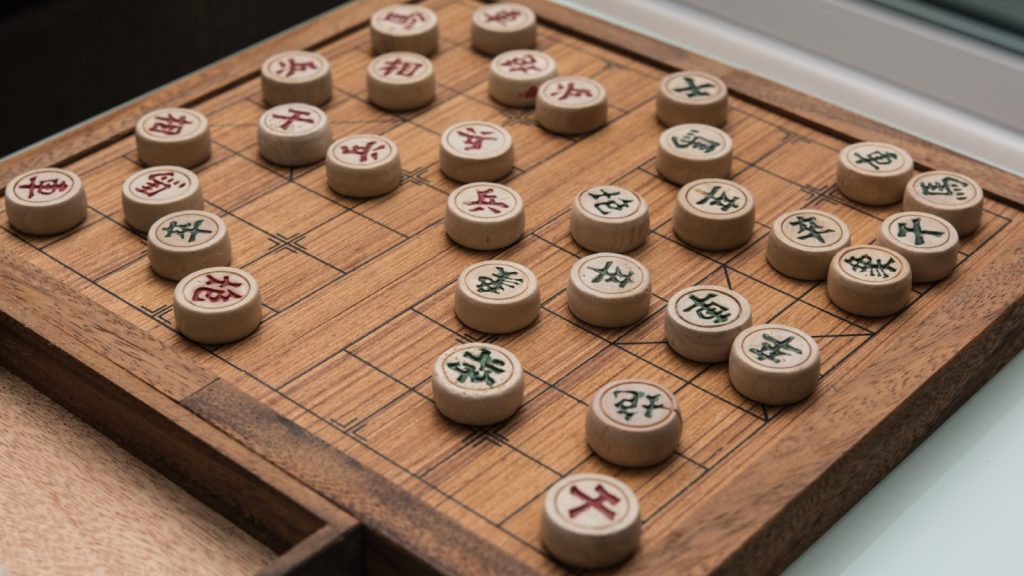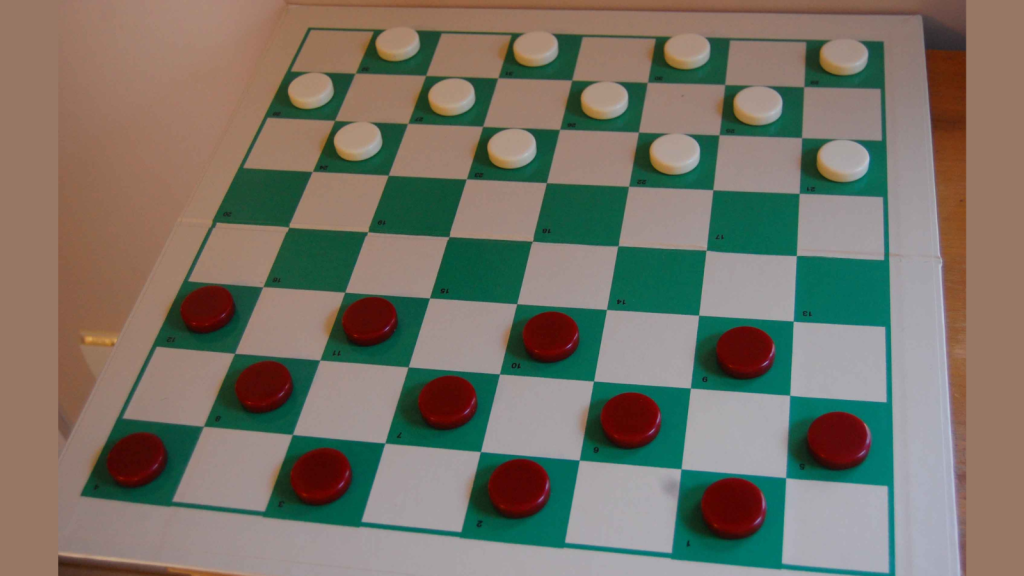Long before video games and mobile apps, our ancestors were busy outsmarting each other with clever board games. These games, some dating back thousands of years, have stood the test of time and continue to challenge and delight players today. From the royal game of Ur to the ever-popular chess, these ancient strategy games offer a window into the minds of our forebears. They reveal not just how people entertained themselves, but also how they thought about strategy, risk, and decision-making. Get ready to explore 15 fascinating games that have been captivating players for centuries – you might even find a new favourite to try!
Chess

Chess, the king of strategy games, has been challenging minds for over 1500 years. Originating in India around 600 AD, it spread to Persia and then to the rest of the world. The game simulates warfare, with each piece moving in unique ways across the 64-square board. Despite its ancient roots, chess remains incredibly popular, with millions of players worldwide and regular international tournaments.
Go

Go, known as Weiqi in China, is possibly the oldest board game still played today. Dating back over 4,000 years, this deceptively simple game involves placing black and white stones on a grid to surround territory. With more possible game variations than atoms in the universe, Go is considered one of the most complex strategy games ever created. It’s particularly popular in East Asia, but has gained a global following in recent years.
Backgammon

Backgammon’s origins can be traced back to the ancient Mesopotamian game of tables, some 5,000 years ago. Players move their pieces around the board based on dice rolls, aiming to be the first to remove all their pieces. The game combines strategy with an element of chance, making each match unpredictable and exciting. Backgammon remains popular worldwide, especially in Middle Eastern countries.
Mancala

Mancala isn’t just one game, but a family of games played around the world, especially in Africa and Asia. The oldest evidence of Mancala games comes from Jordan, dating back to 6000 BC. Players move stones or seeds around a board with multiple wells, capturing their opponent’s pieces. The simplicity of Mancala’s equipment – just a board with holes and some counters – has contributed to its enduring popularity.
Nine Men’s Morris

This simple yet strategic game has been played for at least 2,000 years, with boards carved into ancient Egyptian temples. Players take turns placing their nine ‘men’ on the board, then move them to create ‘mills’ of three in a row. When a mill is formed, the player can remove one of their opponent’s pieces. The game ends when a player is reduced to two pieces or can’t move.
Senet

Senet is one of the oldest known board games, dating back to ancient Egypt around 3500 BC. Players move their pieces across a board of 30 squares, with movement determined by throwing sticks or bones. The exact rules are unknown, but modern versions have been created based on archaeological evidence. Senet was so popular in ancient Egypt that boards were often included in tomb furnishings for the deceased to enjoy in the afterlife.
The Royal Game of Ur

Discovered in the Royal Tombs of Ur in Iraq, this game dates back to 2600 BC. It’s a race game where players move their pieces along a track, with moves determined by rolling dice. The game fell out of favour around 200 BC, but thanks to a Babylonian clay tablet describing the rules, it can still be played today. The British Museum even hosted a game between a curator and a YouTuber in 2017, showcasing its enduring appeal.
Xiangqi (Chinese Chess)

Xiangqi, also known as Chinese Chess, emerged during the Warring States period in China (476-221 BC). Like Western chess, it simulates a battle between two armies, but with pieces moving on the intersections of the board rather than within the squares. Xiangqi remains hugely popular in China and other East Asian countries, with professional tournaments attracting large audiences.
Checkers (Draughts)

Checkers, known as Draughts in Britain, has been around in various forms for thousands of years. The modern version likely evolved from a game called Alquerque, which was played in the Middle East as far back as 1400 BC. Players move diagonal pieces across a board, jumping over and capturing the opponent’s pieces. Its simple rules but deep strategy have made it a perennial favourite around the world.
Hnefatafl

Hnefatafl, or ‘King’s Table’, was the chess of the Viking world. Played across Scandinavia from at least 400 AD until chess supplanted it around 1000 AD, the game simulates a king trying to escape an ambush. One player controls the king and his defenders, while the other commands a larger force of attackers. After falling out of favour for centuries, Hnefatafl has seen a revival in recent years among history enthusiasts and strategy game fans.
Mahjong

While not as ancient as some others on this list, Mahjong has been captivating players for over 300 years. Originating in China during the Qing dynasty, it’s a game of skill, strategy, and luck played with a set of 144 tiles. Players draw and discard tiles to create winning combinations. Mahjong spread globally in the early 20th century and remains popular worldwide, especially in its digital versions.
Shogi (Japanese Chess)

Shogi, often called Japanese Chess, evolved from the same Indian game that gave rise to Western chess and Xiangqi. Dating back to the 8th century, Shogi has a unique feature: captured pieces can be returned to the board under the capturer’s control. This ‘drop rule’ adds an extra layer of complexity to the game. Shogi remains immensely popular in Japan, with professional players achieving celebrity status.
Konane

Konane, also known as Hawaiian Checkers, was a favourite pastime of Hawaiian nobles before Western contact. The game is played on a stone board with black and white pebbles. Players jump over each other’s pieces, removing them from the board, until one player can’t move. Archaeological evidence suggests Konane has been played for at least 500 years, and it’s still enjoyed in Hawaii today.
Tafl Games

Tafl games were a family of strategy board games played by various Northern European cultures from at least 400 AD. These games, including the Viking Hnefatafl, all involve a central king piece trying to escape or reach the edge of the board while surrounded by enemy pieces. While they fell out of favour with the arrival of chess, Tafl games have seen a resurgence in recent years among history enthusiasts and strategy gamers.
Pachisi

Pachisi, the national game of India, has been played since at least 500 AD. Players race their pieces around a cross-shaped board, with moves determined by throwing cowrie shells or dice. The game spread globally, spawning variations like Parcheesi in the US and Ludo in the UK. Its combination of strategy and luck, along with the social aspect of multiple players, has ensured its ongoing popularity.
12 Worst Video Game Movie Adaptations of All Time
Make You Say “What??”

I used to get excited when my favorite games were turned into movies, but after a few really horrendous experiences, I just started to roll my eyes and shake my head in bemused despair each time I heard about another video game movie adaptation. I pretty much knew that I’d be disappointed.
For years, the silver screen has tried to capture the magic of video games, often missing the mark. From bad acting to cringe-worthy effects, video game movies have gained a reputation for being terrible. Gaming experts at Gamer Brain examined IMDb ratings for every video game movie adaptation to find the top 12 worst ones.
Read More: 12 Worst Video Game Movie Adaptations of All Time
16 Everyday Habits That Will Ruin Your Laptop Faster

Sadly, like most appliances and electronics nowadays, laptops are built to be disposable rather than being built to last. I do agree that getting a new one is kind of awesome. But a good laptop isn’t cheap, and setting up a new one is a real pain. I have a Lenovo gaming laptop, and it really is a workhorse. It definitely was expensive, but I’ve been extra careful to take good care of it, and it’s rewarded me with exceptional performance for all of my creative (and gaming when I’m goofing off) endeavors.
You don’t need to be a tech guru and understand how to replace your graphics card or rebuild your laptop to keep it running smoothly, there are just certain things you need to avoid doing. And I bet you’re making at least a few of these mistakes.
Read More: 16 Everyday Habits That Will Ruin Your Laptop Faster
Katy Willis is a writer, master herbalist, master gardener, and certified canine nutritionist who has been writing since 2002. She’s finds joy in learning new and interesting things, and finds history, science, and nature endlessly fascinating.

